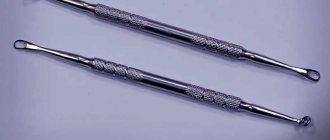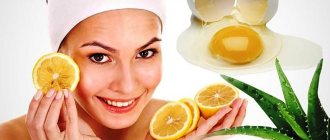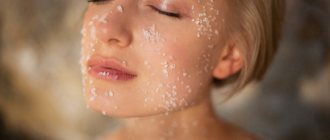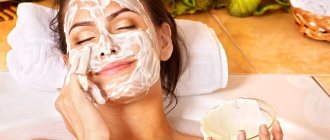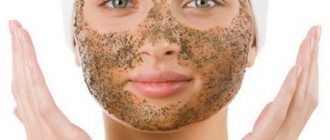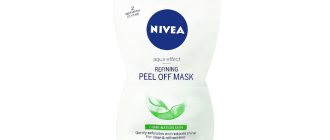Cleansing facial skin with oil is a physiological way to prevent the appearance of “blackheads” and keep pores clean. The idea of using vegetable fats for cleansing at first seems incredible. After all, in the minds of most people, cleansing is foam, gel, soap. Of course, one does not exclude the other, and cosmetologists recommend washing with foam after such cleansing to remove excess. If a significant oil film remains on the skin, especially on oily skin, then oxidation products will provoke acne and comedones. It is important to cleanse appropriately for your skin type after the procedure. If in doubt, remember that sebum is also a fat that the skin produces to protect and soften the skin. When there is little or much of it, then problems arise. Deep cleansing of the skin with oil is designed to remove excess and/or replenish lipid deficiency. It is important to choose the final cleansing option (foam, ubtan or without additional cleansing with anything) so that the resulting feeling is comfortable, the skin remains softened, and there are no clogged pores. Using oils instead of traditional soap helps protect the natural lipid layer and microbiome, increasing local immunity and resistance to pathogenic bacteria. The meaning is that “like is cured by like” (Latin: “Similiasimilibuscurantur”). In other words, the application of mixtures is intended for:
- removing excess sebum,
- cleansing clogged pores from oxidized sebum (“blackheads”),
- removing dead cells and makeup.
Oil, like sebum, is a lipid. Sebum easily dissolves in it and is then removed. At the same time, a thin oil film remains on the skin. Traditional cleansers can cause dryness and irritation. And as a result, lead to sensitivity, excessive sebum secretion on oily skin or, conversely, deprive dry skin of essential lipids. Oil cleansing is designed to balance surface skin fats and maintain the natural moisture of the skin. It must be remembered that the skin has a hydrolipid mantle. Therefore, for complete recovery it is necessary to apply a cream-emulsion. We often incorrectly define our skin type as oily and start using products with aggressive surfactants. As a result, the epidermal barrier is destroyed, the skin begins to dry out more, and in response, produce even more oil. Therefore, for owners of dry skin types, as well as oily ones, it is important to ensure the availability of the two main components of the hydrolipid mantle in leave-in care - water and fats. At the same time, cleansing itself can be based only on water-soluble components (foam, gel) or a fatty base (oil, hydrophilic oil). Let's talk about the second option in detail. Let's highlight several methods.
- Traditional cleansing with a mixture of castor oil.
- Removes stubborn face and eye makeup.
- Use of hydrophilic oil.
Cleansing the skin with castor oil
The procedure is suitable for any type, for the gentle extraction of oxidized sebum (blackheads), and the effect is comparable to atraumatic cleansing of pores. For acne, damage and any rashes in the acute stage, this method should not be used, as it can provoke an even greater inflammatory response and the spread of infection over the entire surface of the face. Castor oil is the main component of the mixture, since it is quite resistant to oxidation, has a set of rare acids and slow but significant penetrating ability. Castor oil has long been used in cosmetology and medicine, valued for its “magical” healing properties. Dr. McGarey wrote in The Oil That Heals: “Castor oil makes your skin feel better.” Castor oil is thick and thoroughly removes stubborn dirt. Used in combination with other liquid bases. For oily skin, take 50-75% castor oil and 50-25% another. In the classic version, the companion is olive. We recommend lighter, less comedogenic ones - macadamia, avocado, sasanqua, rice. They, like olive oil, are dominated by oleic acid, which enhances penetration and cleansing properties. For normal and dry skin types, the amount of castor oil is reduced. For dry castor oil, for example, a quarter is allocated, and complementary oil – 3/4. Please note that castor oil for cleansing facial skin must meet strict quality requirements , because the procedure involves intensive penetration into cells. Unfortunately, pharmaceutical versions of castor oil are obtained using chemical solvents, which affects their final content in the product. If you have a choice, and Aromashka offers it, prefer cold-pressed organic castor oil. Protect your skin from toxic substances, choose benefits. Essential oils and extracts in cleansing mixtures enhance penetrating ability, impact on the problem, and have an aromatherapy effect. Do not include esters in mixtures for the eye area to avoid getting them on the mucous membranes. Don’t be afraid to experiment - choose your own mixture composition. We offer options, but you can only take base oils, no extracts or essential oils. Although with them the effect will be brighter. Recipe for oily skin prone to rashes (not in the acute stage) • Castor bean (castor) organic 12 g • Hazelnut 6 g • Tamanu 2 g • Neem 1 g • Calendula CO2 extract 0.5 g • Eucalyptus essential oil 3 k • Thyme (creeping) EO 1 part For oily skin • Castor bean (castor) organic 10 g • Sesame 7 g • Black cumin 4 g • Birch CO2 extract 0.5 g • Tea tree EO 3 part • Petitgrain EO 2 part For dry, delicate skin • Castor bean (castor) organic 5 g • Macadamia (raff. or non-raf.) 7 g • Peach 8 g • Amaranth CO2 extract 1 g • Licorice CO2 extract 0.3 g • Lavender EO 3 parts . Geranium EM 2 k. For combination skin • Castor bean (castor)organic 7 g • Karanji 4 g • Avocado 10 g • Rosemary CO2 extract 0.5 g • Myrrh EO 3 k. • Manuka EO 3 k. To prevent pigmentation • Castor organic 10 g • Rosamosketa 5 g • Rice or marula 5 g • Rosemary CO2 extract 0.2 g • Licorice CO2 0.2 g • Virola EO 2 k. • Lemon EO 2 k. This recipe can only be used during low ultraviolet radiation. Or exclude lemon and increase virola to 4 k.
How to make masks from essential oils
When making masks, esters are not taken in their original form; they are added to base oils, a couple of drops per 1 tablespoon.
READ ALSO: Is it possible to pull out a wen with a syringe?
Cosmetologists advise choosing an oil that does not have a strong aroma as a base oil, it can be peach or almond. But olive and castor oils are used less often because of their rich aroma.
Esters help reduce sebum, fight clogged pores and add radiance to the face.
Suitable base oils:
- Jojoba (well moisturizes);
- Grape seeds (contains vitamins for growth);
- Almond (nutritional properties);
- Olive (rich in vitamins, perfectly nourishes the skin).
Essential oils suitable for reducing oil content:
- Grapefruit – rich in vitamins, reduces sebum secretion;
- Ylang-Ylang – reduces skin oiliness and inflammation;
- Tea tree – suitable for excessively oily skin.
To reduce oily skin on the face and clean out pores, you can use a cleansing mask with grapefruit oil.
It is rich in vitamins A, B, D, C and P, optimizes the functioning of the sebaceous glands, and normalizes the body's immune defense. They give the face a radiant appearance and reduce sebum secretion.
For the base, take 1 tablespoon of almond or olive oil and add 3-5 drops of grapefruit essential oil.
The product is applied to the skin and washed off after a couple of hours.
Procedure protocol
The skin should be free of makeup. Distribute a small amount along the massage lines of dry (not moistened with water) facial skin. Massage for a few minutes, take your time. Wet a terry towel with warm/hot, but not scalding, water, wring it out and apply as a compress to your face until it cools. The increased temperature will gently open the pores, the mixture will penetrate inside and dissolve impurities. Rinse the towel and repeat 2-3 times. For slower cooling, place a dry towel on top of a wet towel. Finally, wipe the skin several times with a clean, damp towel to remove any remaining oil. Wash with foam or ubtan if necessary. Rinse with cool water to “close” the pores. Complete the procedure by spraying hydrolate to normalize the pH. Do not neglect the subsequent application of the cream, this is important for maintaining the hydrolipid balance and avoiding the “parchment” effect with long-term use. If the skin remains red for a long time after the procedure, use less hot water next time. Warning Rosacea and rosacea are contraindications to this method of cleansing due to intense thermal and mechanical effects. For rosacea, you can try a warm towel and avoid friction (use only as a compress), complete cleansing with foam. If a negative reaction is observed, do not use the method. Give preference to ready-made hydrophilic oils (see below). Those with sensitive skin should be careful and also avoid high temperatures. At the slightest hint of a negative reaction, stop the process. Deep cleansing of the skin with oil is not included in the daily care program. The procedure should be carried out no more than once or twice a week.
Removing stubborn makeup (eyes and face)
Try making your own makeup remover with a natural composition. Take light bases (for example, rice and jojoba), hydrolat cornflower or rose water, cotton pads. Wet it with dischydrol and apply oil to it. Gently apply the disc to your closed eyelids, lips or face (depending on where you are removing makeup) for a minute to allow the makeup to begin to dissolve. Carefully, without stretching the skin, remove the disc. Take a new one and repeat the algorithm until the cosmetics are completely dissolved. This method is effective for removing stubborn mascara, lipstick, and heavy foundation. Finish removing makeup with a foaming cleanser (if necessary) and wiping with floral water (to further remove residue). Then apply skincare cream. You can do without hydrosol and moisten the disc with hot water. This enhances the solvent properties of the oil (depending on temperature). But there are no beneficial properties of hydrolates.
My whole face is covered in blackheads**: what to do?
The answer is simple - go to a dermatologist. Only a doctor can determine what causes blackheads** and choose the right treatment. One of the drugs that is used in the fight against acne is Azelik®5,9 gel. The drug is prescribed for mild to moderate acne5,9. Its main active ingredient is azelaic acid5. The foundation also contains the emollient squalane, which helps soften and moisturize the skin1.
*acne
**open comedones
Cleansing with hydrophilic oil
In this case, a solubilizer is additionally added to the oil mixture.
Thanks to soft surfactants of natural origin, obtained from sugars, the oil is easier to wash off. Making such a product is simple. • Sasanqua 15 g • Rice 5 g • Organic solubilizer 2 g • Preservative Sharomix 7214 drops Mix the ingredients with a glass rod, shake the bottle before each use. If necessary, use the recipes for oil mixtures based on your skin type from those listed above, but exclude essential oils and extracts that can irritate the mucous membranes of the eyes. For other zones, you can use your imagination and enrich the composition with esters as desired. A suitable ready-made option for the delicate periorbital area would be a neutral hydrophilic oil. For the face, there are ready-made options for skin types: “Fragonia and grapefruit” for oily and combination skin and “Rosewood and chamomile” for dry and sensitive. For normal type, both options are suitable. Another emulsifier for creating hydrophilic oil is polysorbate (20 or 80). Take 10-20% polysorbate, mix with oil. Shake before use. Apply to dry skin, massage and rinse with water. The mixture will turn into liquid “milk” and can be easily washed off. Salicylic acid is added to hydrophilic oil with polysorbates to enhance the cleansing properties of comedones. The recipe is here. It can be used in the first method, with a warm towel. Cannot be used on the eyes. We recommend finishing cleansing with a foaming cleanser suitable for your eyelids and skin type to prevent excessive film formation and cause swelling. Remember to use light moisturizers, even if the skin seems quite softened after the procedure. Experiment with the wonderful world of aromacosmetology and create your own recipes - the results will not be long in coming. Recommended recipes Hydrophilic gel for removing eye makeup
Hydrophilic oil for washing oily and combination skin CITRON
Hydrophilic coffee oil for cleansing
Airy foam cleanser with angelica
2307
Publication date: 2016-06-07 10:53:35
Questions, comments and feedback
Add a message Your opinion is important to us. Please be the first to comment.
To write a message, you must log into the site using your e-mail and password.
Oksana O.21/04/2020 (ID-24496)
Good afternoon, Aromashechka! Please tell me which oils are better to use to make a hydrofil for pores clogged with blackheads. The skin itself is dry, without tone, with redness in the nasolabial triangle, with beginning signs of aging (low estrogen has always been there). I made it with primrose and sea buckthorn, with safflower. The face is smooth, but the spots do not go away and the redness does not disappear. Thank you! 
Anna A. (Aromashka team)21/04/2020 (ID-24501)
Oksana, hello! Try making it with castor oil. It works well on blackheads in cleansers. It is good to add black cumin/neem/tamanu. To work with redness, it is worth adding licorice CO2. But just a cleanser will not remove redness. It is important to understand the cause of redness, is it irritation or rosacea or another reason, etc.?
Marina S.09/01/2020 (ID-23048)
Hello. Tell.
Is it possible to use point 3 ( hydrophilic oil - as per your recipes ) instead of a cleanser? I don't wear makeup. You just need to wash your face in the morning and evening. Skin is sensitive. But the T zone is oily (especially the nose is oily + there are blackheads and pimples).
Or are there better cleansers? If so, which ones?
Anna A. (Aromashka team)09/01/2020 (ID-23074)
Marina, hello! You can use hydrophilic oils for washing. Remains of hydrophilic oil must be removed with a cotton pad with hydrosol or foam. Also, for sensitive skin, I highly recommend trying Sentio foams; they are very gentle, but at the same time effectively cleanse the skin.
Ksenia S.18/10/2019 (ID-21995)
Hello! Please tell me, the main thing in this cleansing method is castor oil, but will it cause clearing in the corners of the eyes? Or this happens if you use castor oil in its pure form as an additional supplement. care? Please clarify!)
Anna A. (Aromashka team)10/18/2019 (ID-21998)
Ksenia, hello! If we are talking about deep cleansing the skin with oil using a mixture of oils and a napkin, then we do not apply oil to the area around the eyes. In any case, the oil is needed to dissolve fat-soluble contaminants and is then removed. Either with a napkin, or in the case of makeup, a disc with hydrosol. It is better not to use castor oil to remove eye makeup; it will be difficult to remove.
What components are present in grape seed oil?
Thanks to its light texture, this oil can be used to care for oily and problematic skin. It contains many useful components100:
- Fatty acid. Oleic, arachidic, palmitic, and stearic acids restore the structure of the epidermis, helping to make the skin more elastic.
- Vitamins, microelements. The natural product contains vitamins A and E, as well as vitamin C and B vitamins, so it has a pronounced restorative effect. It is rich in sodium, potassium, calcium, iron, steroids and phenol.
- Antioxidants. The presence of procyanides in the composition allows the use of grape oil to protect the epidermis from the negative influence of the external environment.
The oil contains tannins, natural chlorophyll, and protein, which restore and tone the skin. The product is suitable for both men and women.




